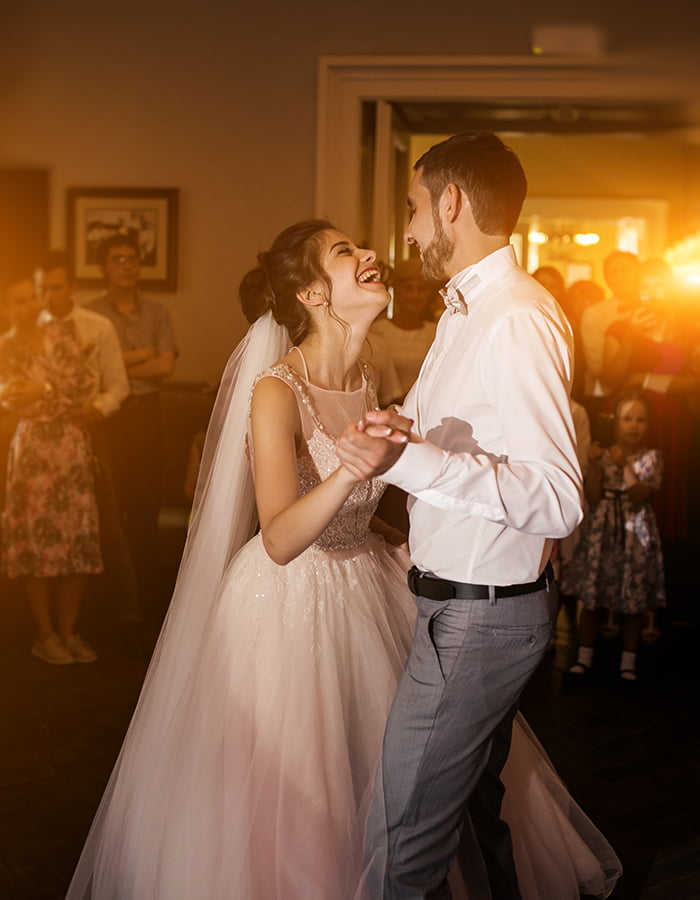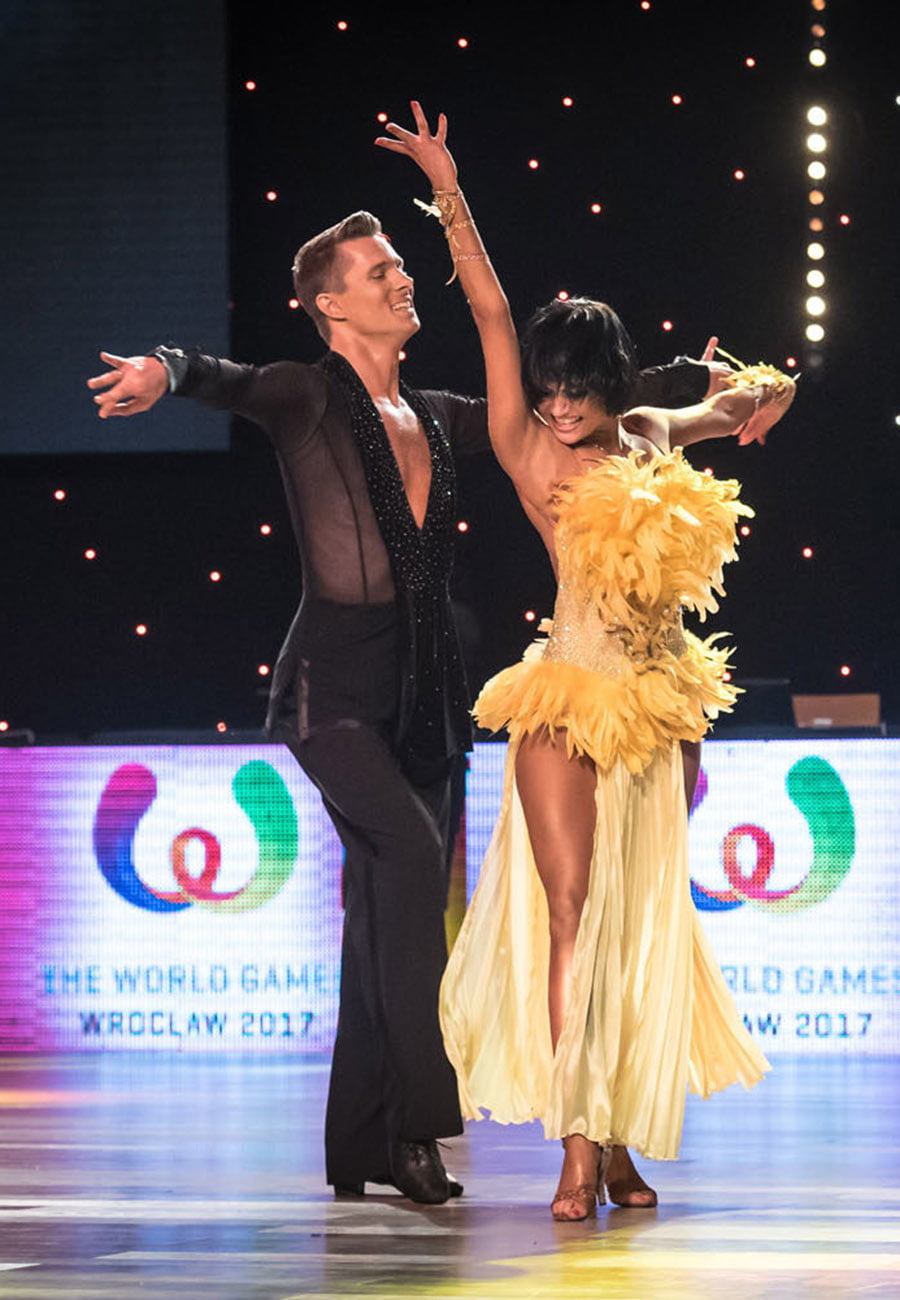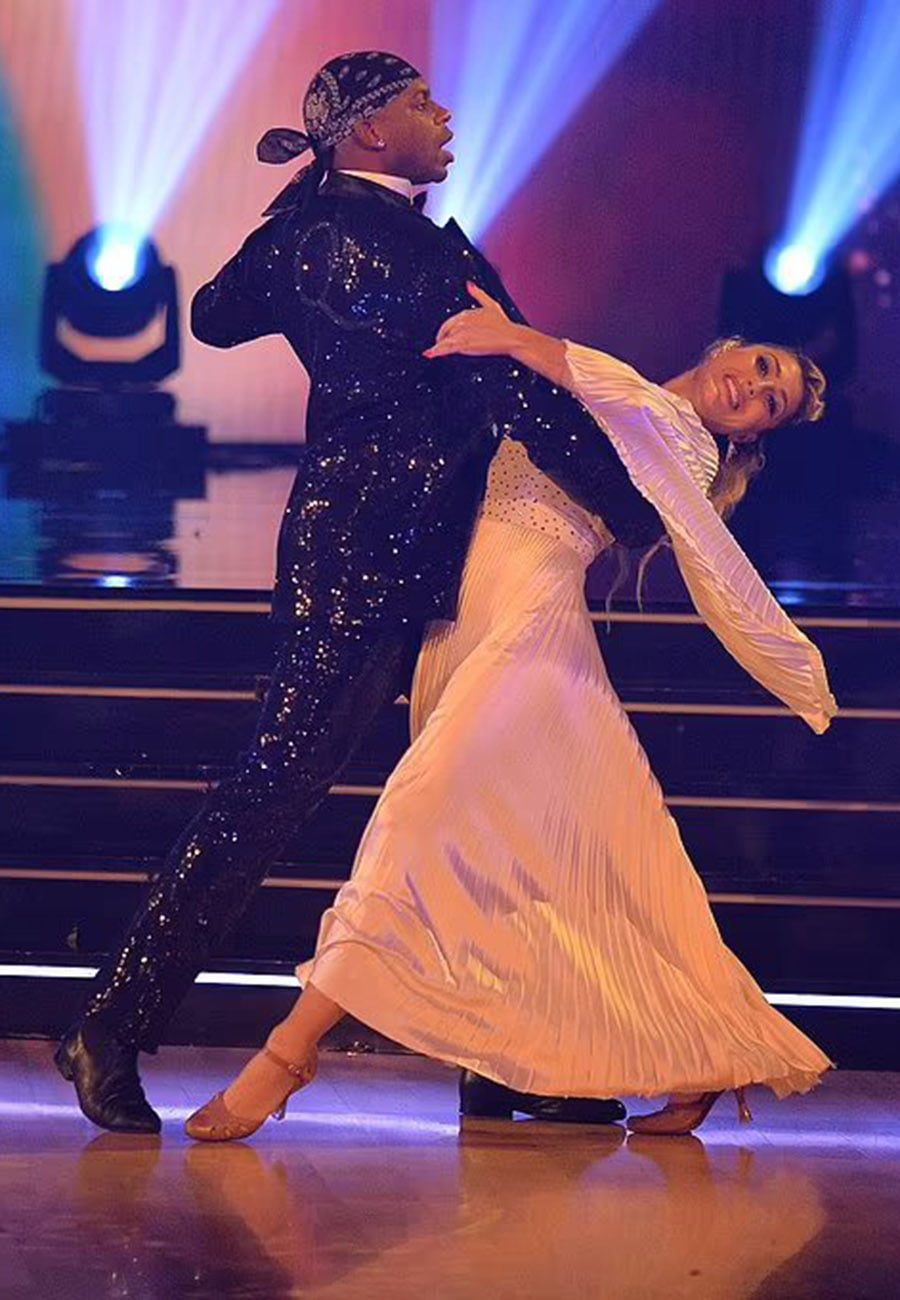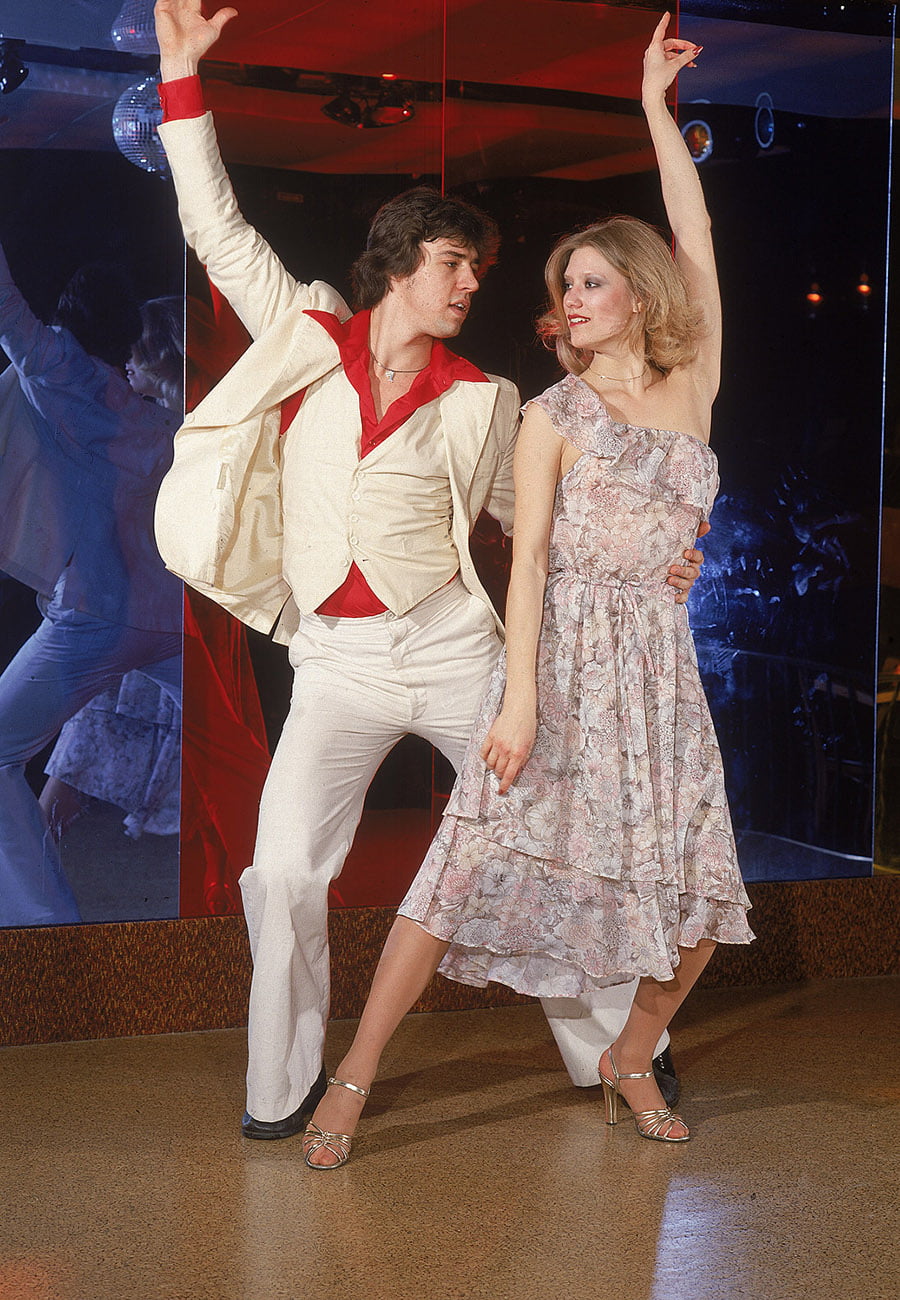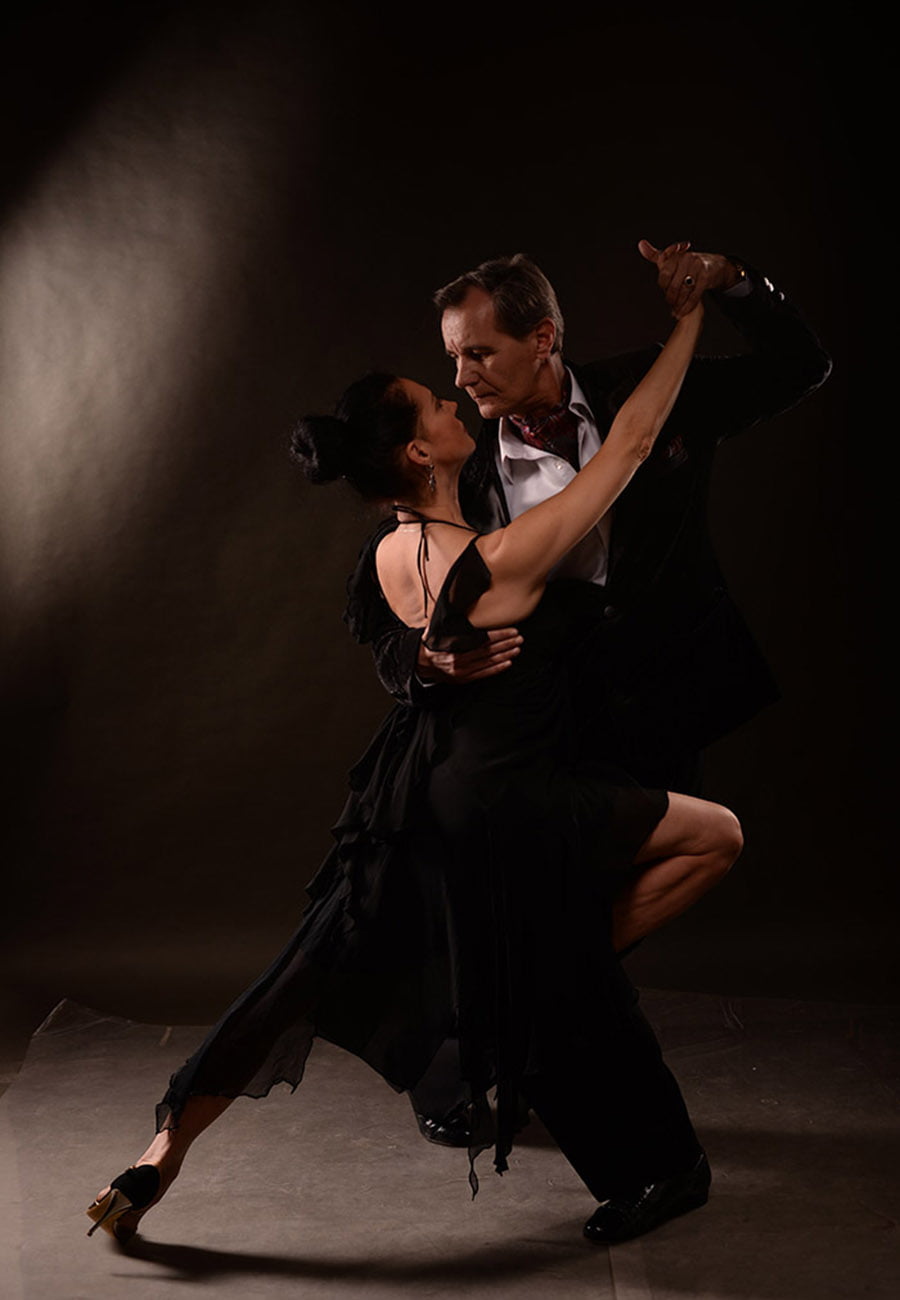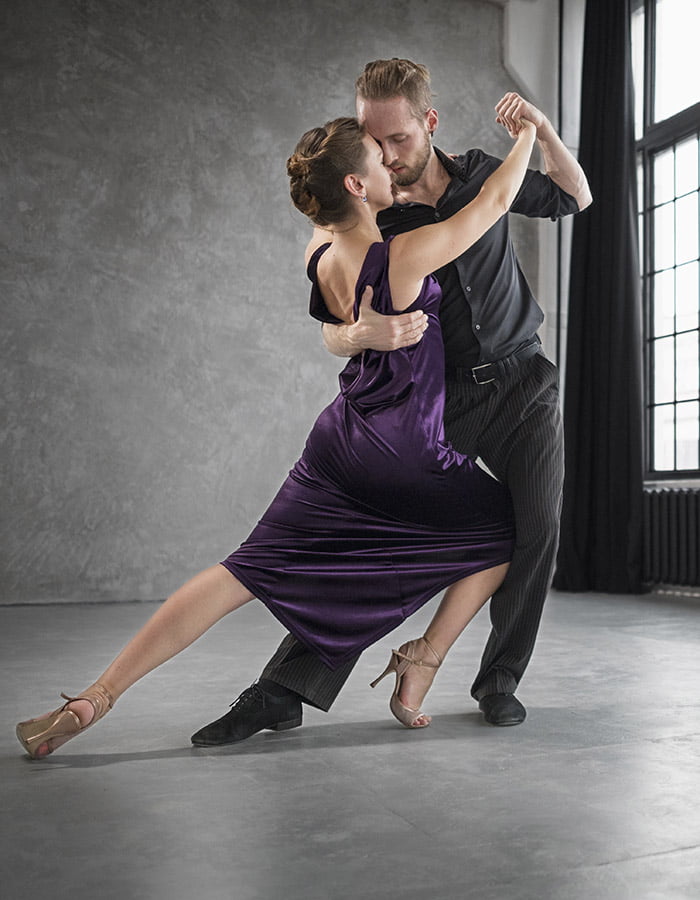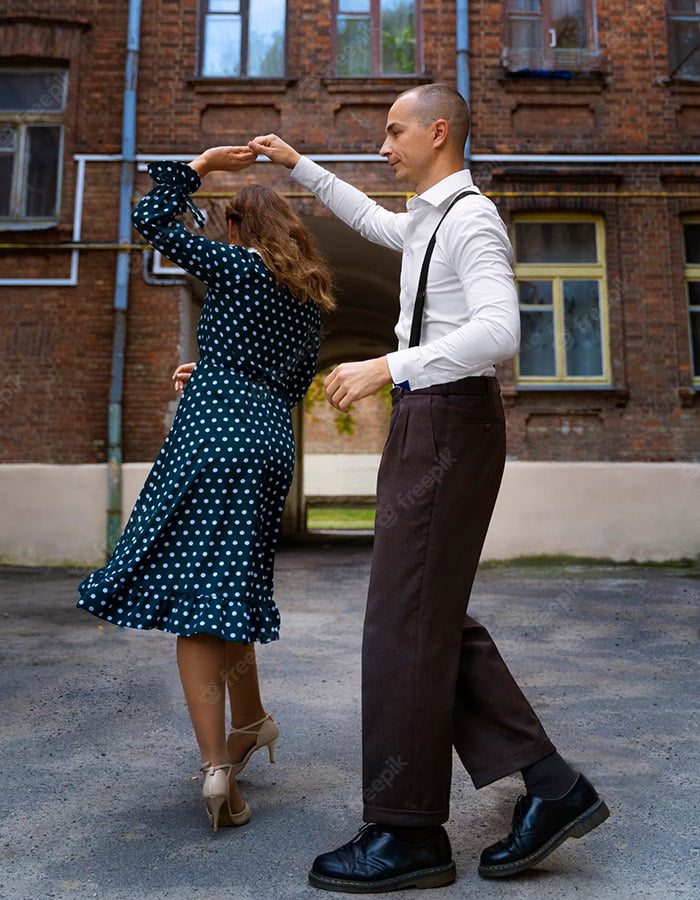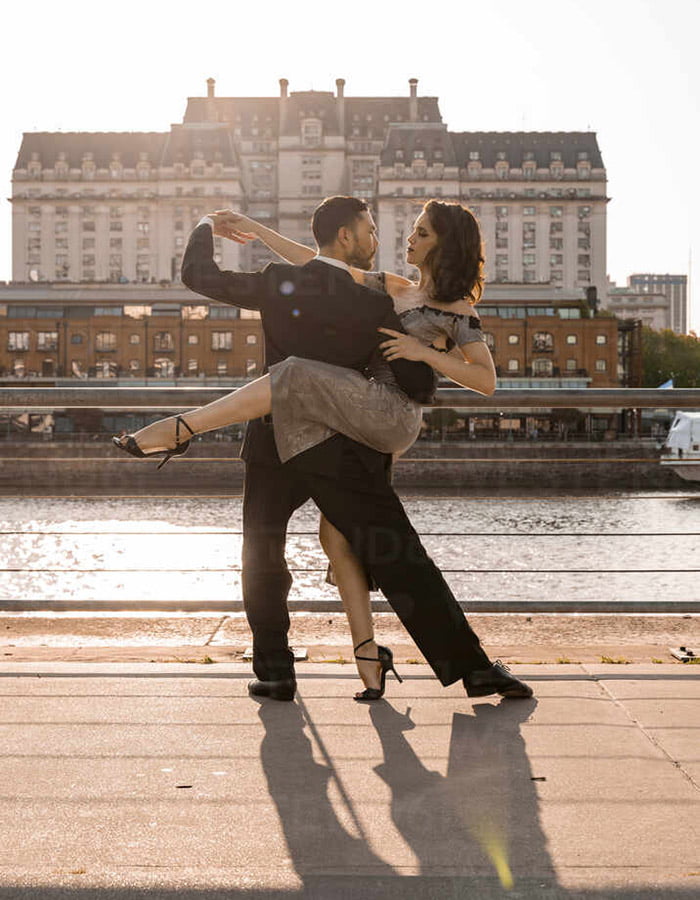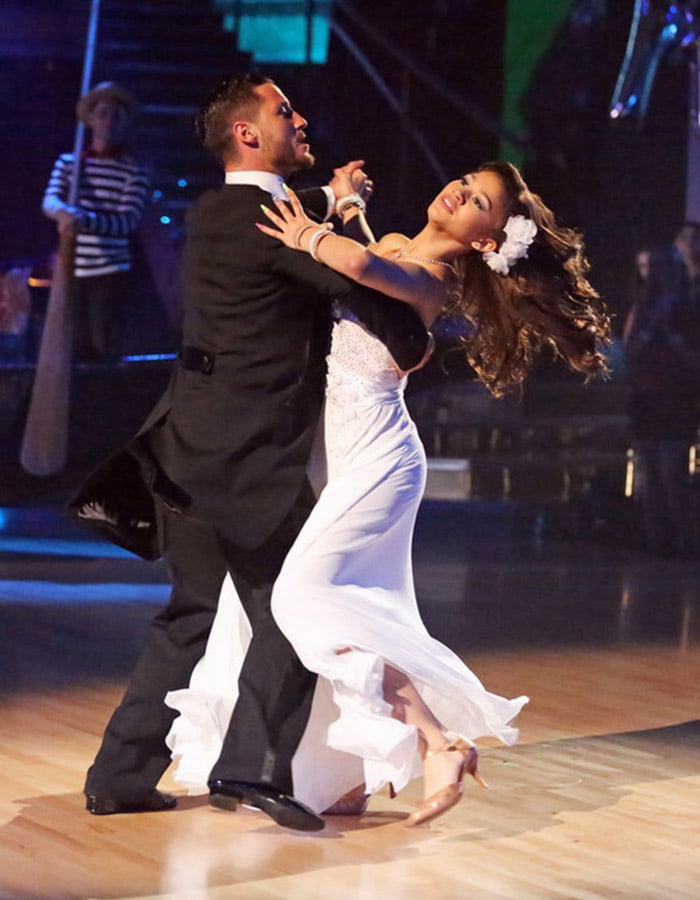
SOCIAL DANCE
Social Dancing is a non-competitive form of ballroom and Latin dancing built on the premise of being able to socialize while dancing with someone. It is comprised of all the same dances, like Foxtrot, Tango, Swing, or Cha-Cha, but designed to be used in practical settings.
Social dancing is less formal than exhibition dancing and is meant to be enjoyed while socializing, hence its name. Ballroom Boutique Dance Studio is the leader in social dancing. Learning to dance socially gives you the tools to dance with confidence at wedding receptions, office parties, dinner dances, and nightclubs. Ultimately, social dancing is having the ability to converse while dancing.
Being able to multi-task while dancing takes some practice but allows dancing to develop into natural use much quicker. Once you understand the basics of social dance, you’ll be able to chat about work or the weather while Waltzing with a partner.
Benefits of the Dance
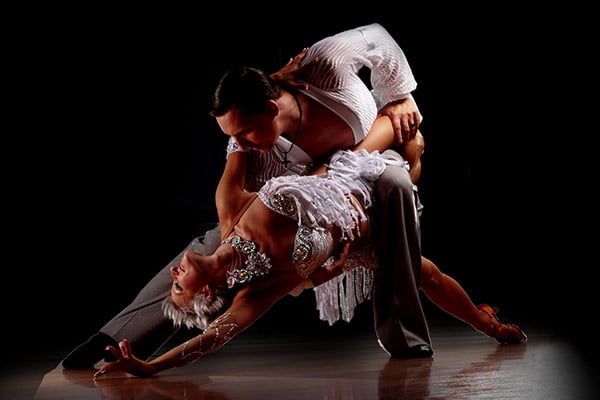
Burn Fat & Lose Weight
Ballroom dancing is a low-impact aerobic activity that burns fat and can boost your metabolism. Dancing is an excellent way to lose weight and to stay healthy and toned once you have reached your goal.
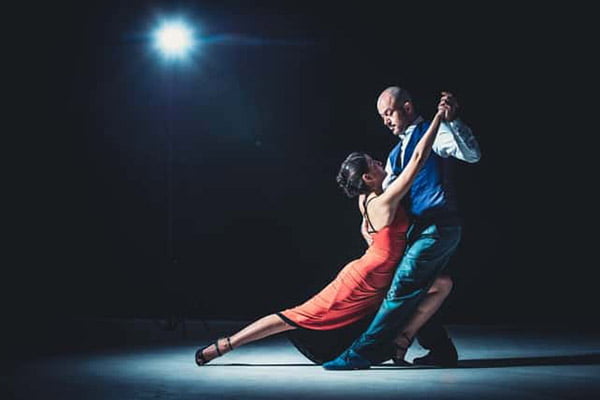
Increase Flexibility
Beginner dancers especially will notice that the more you dance, the more flexibility and range of motion the body develops. Increased flexibility helps increase dance ability, strength, and balance.
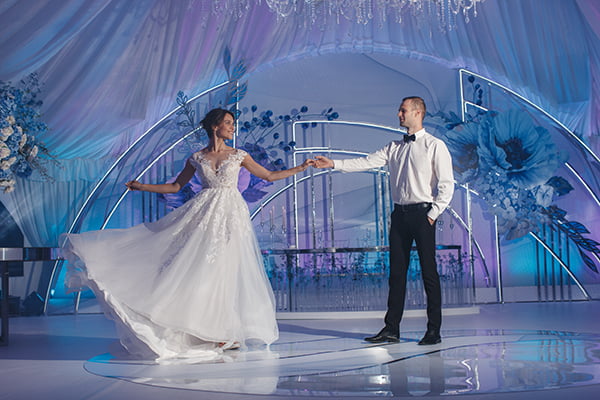
Increase Strength & Endurance
Ballroom dancing contributes to the build-up of muscle strength because the act of dancing forces a dancer’s muscles to resist against their own body weight. Look and feel stronger and more toned.

Great For All Ages
Ballroom dance is a fun activity for people of all ages and abilities–from children to senior citizens, which is another reason it is such an effective form of exercise. We work with students of all ages and abilities.

Physical Health
Ballroom dance offers a variety of health benefits and can decrease blood pressure and cholesterol, improve cardiovascular health, strengthen bones, and lower the risks of obesity and Type II Diabetes.

Mental Health
Research has found that ballroom dancing can improve mental acuity throughout a dancer’s life. Dance lessons provide an enjoyable escape from the stresses of daily life, plus a chance to relax and relieve stress.
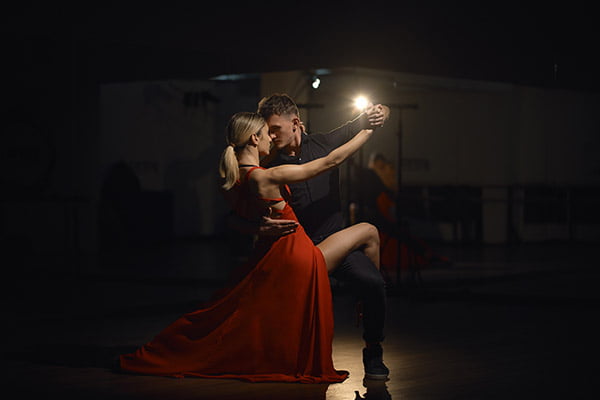
Confidence
Every opportunity to dance, whether during a lesson or at a social event, improves your comfort level, confidence, and communication skills on the dance floor. Become more confident in your own abilities.

Self-Expression & Creativity
Ballroom dancing can be a wonderful creative outlet since dance is a way to express your feelings through movement, both alone and with others. Put your own spin on dance moves and add passion and flair.

Social fun & Friendship
Ballroom dance lessons offer you an opportunity to expand your social circle, build connections, and engage with people in a low-pressure environment. Meet new people and potential dance partners.
Wedding Dance
Get ready for the dance of your life. We’ll help you create a moment that you’ll both remember forever with our expert wedding dance lessons. Find the right rhythm together from the moment you both say, “I Do”. From a simple first dance to “YouTube Sensation” routines for the entire wedding party, we can help make your Wedding Day even more special. Get a free wedding dance consultation now! Whether you have some dance experience, or are true beginners, our experienced instructors can help all couples prepare to dance together on their wedding day. Whether you want to elegantly Waltz together, Swing dance, Cha Cha, Foxtrot, Quickstep, or prepare some other dance, we can help ensure that you and your partner are both ready to dance on your special day.
Our experienced instructors know how to put you at ease and turn your first dance into a moment filled with joy and excitement. Ballroom Boutique Dance Studio’s wedding dance coach will teach you and your partner elegant moves that fit your music and suit your taste.
The Waltz
Romantic melodies epitomize the grace and poise of the Waltz. This dance is a highly popular ballroom dance originating from the Ländler German folk dance in the 18th century. The Waltz is characterized by a step, slide, and step in 3/4 time and is one of the best dances to learn for improving in other dances as well. Its turning, embracing couples, at first shocked polite society but now has become a staple of romance and sophistication. The Waltz will help dancers develop mastery of sway, rise and fall, balance and control-concepts essential to experiencing the true joy of any ballroom dance.
Any dancer with a Waltz in their program will see an immediate benefit in the other dances they enjoy. The Walts is a simple, yet elegant dance that can be used in formal and social settings alike – making it a great first choice for new dancers to learn.
THE CHA CHA
To learn the Cha Cha is to love the Cha Cha. Sharp Staccato actions, rhythm changes, and exciting patterns are just some of the challenging aspects of this dance. The Cha Cha is one of most popular Latin dances and encourages you to cut loose and let your personality show. The Cha Cha is the first impression dance for competitive Latin and Rhythm dancers, and it has ties to every American Rhythm dance. In fact, many of the exciting moves you see at advanced levels of Cha Cha are introduced at a very basic level.
While many believe the Cha Cha originated in a South or Central American country, it got its start in the USA as an adaptation of the Mambo. The Cha Cha was once referred to as the “Triple Mambo”. Mambo bands began to play slower music and the dancers needed to adjust to the new tempo. As a result, dancers added a triple step in between the forward and back rocking steps of the Mambo and the Cha Cha was born.
The Foxtrot
Of all the Ballroom dances, the Foxtrot best embodies movement and polish. The foxtrot is a smooth, progressive dance characterized by long, continuous flowing movements across the dance floor. The dance is similar in its look to waltz, although the rhythm is in a 4/4-time signature instead of ¾. From the very first steps, a dancer will feel themselves transform as they master the control of the easy Foxtrot. The Foxtrot has remained relevant for over 100 years because of its ease of use and practical application to any dance environment. The Foxtrot Magic Step has the same shape as the Knight in chess (two forward, one side) and is simple to pick up on.
The foxtrot may not be as flashy as some other dances, but it is reliable and a great foundation for learning other types of social dances. The Foxtrot is a dance you can always count on when the music gets jazzy, at a slightly more formal event, or if you want to focus on being a little more “social” while you dance. In fact, learning how to talk and dance is one of the most important skills in social dancing, and the Foxtrot is the dance that teaches this skill the quickest.
The Hustle
The Hustle originally began as a catch-all term for disco dances that were popular in the 1970s nightclub scene. Although many associate the Hustle with the Disco music of the 70’s, the dance continues to be one of the most popular nightclub dances today. The Hustle has some features in common with Mambo, Salsa, and Swing dance. The music that the Hustle is typically dances to features a strong bass beat that makes for exciting and upbeat movement with plenty of turns, spins, and wraps. In fact, its basic steps are similar to the Discofox, which is a dance that emerged in Europe around the same time as the Hustle.
The modern partnered version of the Hustle is sometimes called the New York Hustle since dancers in New York City paved the way for the rest of the Hustle community; however, the dance’s original name is the Latin Hustle. As the Hustle continued to evolve, it borrowed moves from other dance styles such as smooth ballroom, wing, and Latin rhythms. Modern Hustle is a dance, smooth dance that has the lady spinning almost constantly while her partner draws her in close and then spins her away.
The Merengue
The Merengue is a type of walking or marching dance and is accessible to a large variety of people—including both with and without dance experience. The simplicity of the Merengue is what makes it the perfect party dance! The march type beat helps dancers keep a steady timing so they can interact with their partner. The Merengue emphasizes an 8-count rhythm with Cuban Motion and is danced in place. The basic foot components of the Merengue are walking and side steps, providing more freedom for creating fun patterns on the floor and using animated arm styling.
Merengue is a new world musical style rooted in old-world traditions, including African and Spanish influences. There are many versions of how the Merengue came to be, but everyone agrees that the dance is a favorite of anyone who loves to move to a Latin beat. The Merengue is the national dance of the Dominican Republic and its island neighbor Haiti. Both Haitians and Dominicans alike refer to the Merengue as their “singing dance;” this is understandable when you consider the staccato rhythm and traditional music played for the dance.
Sign Up For a Lesson Today
We look forward to having you in our dance studio.
THE QUICKSTEP
Quickstep is a light-hearted favorite of all accomplished dancers. While some people consider traditional social and ballroom dances slow for their tastes, Quickstep is the exception. From the moment you step out onto the dance floor, Quickstep puts you right in dance mode. This is one dance that will have you staying on your toes and moving. Quickstep, as its name suggests, has dancers up on their feet moving fast to music. The dance is popular at dance competitions, because it pumps up crowds and sets an exciting tone for the event. Part of the fun of Quickstep is seeing how fast dance competitors can move while still staying in sync with one another. Although Quickstep is a fast dance, beginner lessons start out much slower to give dancers the chance to perfect their footwork.
Quickstep in its current form evolved from two other ballroom dances. It originates from England in the 1920s, when dancers adapted both the Charleston and the Foxtrot to create a quick new dance. Learning Quickstep can be an intense, but fun, workout. Dancers looking to move to a fast beat, have fun, and hit a fast rhythm with their partner will love Quickstep.
THE RUMBA
The Rumba as it is known today was derived from a Cuban rhythm and dance called the Bolero-Son. It first gained traction in the United States in the early 1930s and since then it has remained one of the most popular social dances. Rumba is characterized by smooth, subtle hip motion and a heavy walking step. The slower rhythm of the Rumba allows for dancers to develop the distinctive hip action of Latin dances called Cuban Motion. The music is written with four beats to each step as the footwork is counted once slowly then followed by two quick steps. Since the music of the Rumba is slower than many other dances, it provides an opportunity to add an extra layer of choreography, style, and flair, along with perfecting the ability to lead and follow.
Dancing the Rumba is one of the best starting points for learning great Latin and ballroom dancing technique. It can be considered an anchoring point that all the rest of your Latin dances are tethered to. Any dancer who can successfully dance Rumba will see an immediate benefit in the other dances they enjoy, including Waltz, Bachata, Cha Cha, and Salsa.
The Salsa
If you are looking for something spicy, then the Salsa is for you! The Salsa is the unique blending of traditional Latin music and dance steps with the freedom of turning actions and elaborate arm patterns with your partner. As a dance form, Salsa has its origins in the Cuban Son and the Rumba and gained popularity in New York city in the 1970s in several franchised and independent dance studios. Thanks to modern music and dance styles, Salsa is continuously evolving. New, modern dance styles of the Salsa are associated and named according to the geographical areas that they are developed in. Some of the popular Salsa styles include Columbian, Cuban, Los Angeles, New York (or Eddie Torres Style), Palladium, Puerto Rican, Rueda, and On Clave.
Ever popular on the nightclub scene, the Salsa is a dance that fits onto a small, crowded floor without losing its excitement and flavor. If you’re one of the many people that find it hard to look away from Salsa dancers as they move around the dance floor, then learning Salsa is for you! Thanks to TV shows like ‘Dancing with the Stars’, Cuban-inspired Salsa dance is one of the most popular dances to learn.
The Swing
Swing is the most uniquely American of all dances, accompanies by a rich cultural history that you may already know. Swing is perhaps one of the most popular dances of all time and it goes by many different names. You may have heard it called the Jitterbug, the Boogie, and Lindy, just to name a few. Most dance instructors (on this side of the U.S.) are referring to the East Coast Swing, but we’ll just refer to it as Swing to keep it simple. Swing as we know it today evolved from the Lindy Hop and is perhaps the most famous American folk dance of all time. The best-known forms of Swing include the Charleston, Black Bottom, and Shag. In the early 1940s, these forms consolidated into what was called the Lindy and eventually became the East Coast Swing we know today.
It features a carefree, almost buoyant movement that is contagious to other dancers and spectators alike. The lively spirit of Swing gets everyone on their feet to join in on the fun, and Swing can be comfortably danced to a range of tempos and variations. There are few dances more recognizable than Swing. This lively social dance is famous for its flips, lifts and spins.
The Tango
The Tango has no clearly defined origin; it may have originated in Argentina, Brazil, Spain, or Mexico, but it is believed to be descended from an early Spanish folk dance, the Milonga. The Tango first came to be as we now know it in the early 20th century in Argentina. It was danced under various names in Latin America before making its way to the U.S. The Tango first made its appearance in America between 1910-1914 and was instantly a hit for its intriguing and sophisticated dance patterns. The Tango is one of the most highly stylized and recognizable ballroom dances. It has a dramatic style with measured crossing and flexing steps and poised pauses. Accented by strong staccato movements, the challenge of this dance makes it as exciting to perform as it is to watch.
No other dance captures the dramatic strength and romance of the relationship between partners like the Tango. It is considered an “exhibition dance” because all eyes are on the dance floor when two people are dancing the Tango. Although they say it takes two to Tango, it doesn’t take two to learn to Tango. Sign up for Tango classes with one of our instructors!
The Viennese Waltz
This classical dance from the ballrooms of Vienna remains one of the most enchanting and exhilarating dances. While the patterns remain pure, the Viennese waltz technique requires even more of the dancer as they strive to capture the graceful qualities of this dance. Though the Viennese Waltz may be classified as a “classic” dance, it’s not old. This version of the Waltz is stylish, graceful, and still popular with competitive dancers and lovers of classic ballroom dances alike. As with all ballroom dances, the variations of the dance evolved over time and the steps were passed through the generations and across the world. The Viennese Waltz is akin to the original “closed couple” version and is danced to a composer’s musical masterpieces.
You may be familiar with the Viennese Waltz due to the prominence of performances. A dance floor of Viennese Waltzers almost appear as though the dancers are flying in front of you. The dance is completed in a circular motion with dresses flaring, which is why the dance is most often seen in classic movies and performed at ritzy balls or events.
The Bolero
The Bolero was introduced to a U.S. audience in the mid-1930s is one of the most expressive Latin dances. The lead in the dance mimics the movements of the matador in a bullfight, while the follower’s movements alternate between mimicking the bull or the matador’s cape. It’s a dramatic, passionate, and intense dance. The use of arms and hands, legs and feet, as well as facial expression, all contribute to its beauty. Bolero is a slow, sensuous rhythm dance. One unique aspect of the dance is that it has the dancers rise and fall. This rise and fall comes from the body, not the feet, making it a very physically demanding dance. As a result, Bolero is not danced socially very often, but it remains a popular dance for competitions and more dance focused events.
Some would argue that the Bolero is the most romantic of Latin dances. Taking cues from the Rumba and the Waltz, the Bolero has distinct characteristics of long sweeping side steps and use of rise and fall to create both softness and dramatic movement. Learning Bolero is a great way to dip your does into Latin dance, meet people, and get a great workout!


